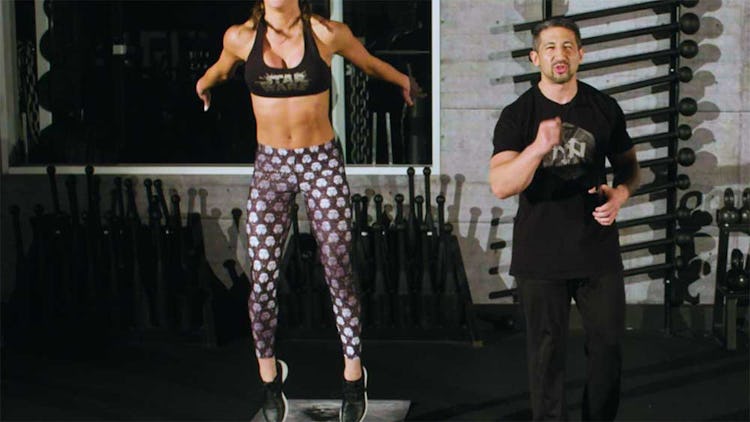

Instead, I’d suggest adding plyometric exercises before or after (or even during) your MMA sessions, and then getting more rest the next day, instead of heading to the gym at 6am for an S & C session.įor example, let’s say your working Muay Thai and on the pads.ĭo 8 tuck jumps after the first 2 rounds on the pads. You train 7 times per week already – MMA, Muay Thai, Judo, Wrestling & BJJ sessions all have to fit into your weekly schedule.ĭo you really want to be doing another 3 sessions of S & C in the gym?įrom personal experience, I’d say no, definitely not.
Sprawl tuck jumps professional#
Let’s say you are a professional MMA fighter. My personal way of tackling strength & conditioning. AQUECIMENTO 3x 10 V-sit up 10 sprawl 20 Jumping Jack WOD 5 Rounds 20 Push up20 Sit up20 Jumping. Here is an academic paper about complex training The idea is that by doing a small amount of ‘standard’ resistance exercises before your plyometrics, you warm up both the nervous system and the specific muscles. You can mix things up a bit with complex training. Try to get as many reps as you can and have fun.

Scale as you need, using a box or stepping on the burpees and trying to get your knees as high as you can on the jumping knee tuck. Short, intense workouts are better, so that you keep targeting explosive power and fast twitch muscle fibres. For the Tuck Jumps, bring your knees towards your chest higher than your hips. Personally, I don’t like long, specifically plyometric workouts. Land softly with your feet hip-width apart and. As you jump, pull your knees up toward your chest. Bend your knees in a quarter squat and, exploding off the balls of your feet, jump straight up in the air.

Both develop ‘the rate of force’ by targeting Type IIb, fast twitch muscle fibres in a specific way. Plyometrics are arguably the best way to build explosive power – Olympic Lifts being the other way. Last updated – 31st December, 2021 MMA Plyometric Workout


 0 kommentar(er)
0 kommentar(er)
